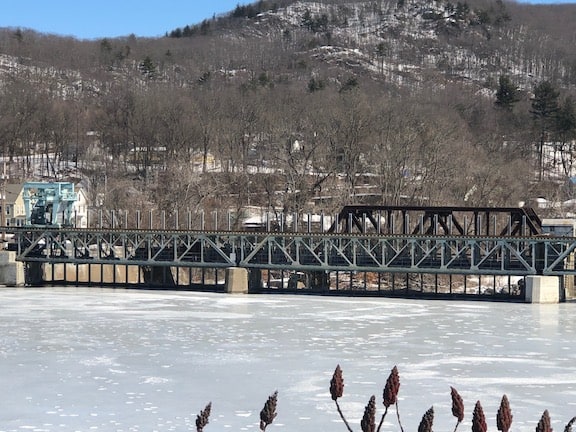
BELLOWS FALLS, Vt. – During negotiations to renew its licenses to operate the Bellows Falls hydro station, Great River Hydro LLC, which owns and operates multiple dams along the Connecticut River, has proposed changes in the operations procedure of the dams due to environmental concerns. Five of these dam facilities in southern Vermont and New Hampshire, and northern Massachusetts, impact more than 175 miles along the heart of the river.
“Environmental concerns were raised by interested parties, regulators, and environmental organizations and largely centered around concerns about rapid fluctuation of [river] flow due to increasing flow during peak energy demand periods and reducing flow during on-peak periods,” Matthew Cole said in a recent interview. Cole handles community relations for GRH.
“Stakeholders view this sort of flow management as unnatural and disruptive to aquatic species that are not adapted to react or manage such changes. Change in discharge at the dams can affect flow rates and water levels downstream.”
After submitting their proposed operating changes to the Federal Energy Regulatory Commission two months ago, GRH is currently in negotiations with the Nature Conservancy and the Connecticut River Conservancy, among others, to renew its federal licenses to run the Bellows Falls station, as well as two other hydroelectric stations.
During these relicensing negotiations, environmental questions were raised, triggering GRH to offer changes in their operating procedures. The new plan would call for the three dams to perform under a “run-of-the-river” operation, as opposed to the current peaking-power or “hydro-peaking” performance operation. In peaking-power operating procedures, water is allowed to build up to a peak and then let out. A run-of-the-river procedure, however, allows the water levels on the river to remain more consistent and natural.
“Run-of-the-river resembles more closely how a river would move,” said Kathy Urffer, a river steward with the Connecticut River Conservancy. “This means that when storms dump rain water, the river slowly increases the flow and then slowly recedes over the course of several hours to days, as opposed to changes in flows in a few minutes. It also means that the surface water elevation behind the dams are held constant (most, but not all of the time) which reduces the water level fluctuations.”
There are multiple concerns with hydro-peaking. It creates a daily two- to four-foot fluctuation in the surface water elevation above the dams, causing wetting and drying of the stream banks. This exacerbates the erosion of the banks, reduces the quality of habitat, and alters a natural sediment regime. Either too much sediment is found above the dam because of water being held back or there is too little sediment below the dam because high flows are flushing sediment and “critters” downstream.
“Basically, the critters that rely on the river are not adapted to a cycle [change] of no flow, and then very high flows,” Urffer added.
Although much of GRH’s operating proposal centers around an inflow equals outflow mode of operation, critical elements of the proposal allow for deviating from that mode of operation. Hydro projects, such as the Bellows Falls location, often have a higher generating capability than what might be used at a particular moment in the inflow-outflow mode. This capability is critical to the New England electric power grid.
“When the system is in short supply, such as when another generating station trips offline, reserve capacity is relied upon to fill the void and hydro generation has some of the fastest response times in such an emergency,” Cole said. “GRH’s proposed operation, supported by states and environmental groups, allows for hydro to respond to these emergency requests.
“Additionally, the new proposal allows for limited generation that would deviate from inflow-outflow restrictions. Limited generation will also be more restricted in the April-October period, as compared to less restriction during the November-March period when many aquatic species are less active or dormant.”
The alternative operations proposal was submitted last December, and the FERC is expected to issue a response for environmental review in the summer of 2021.